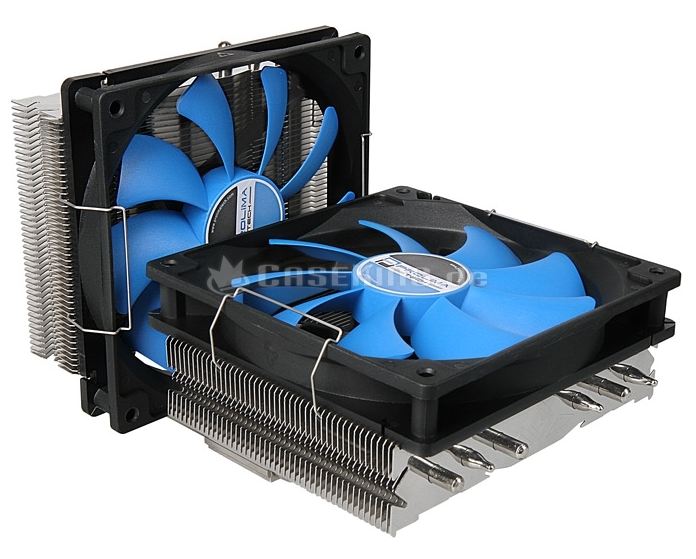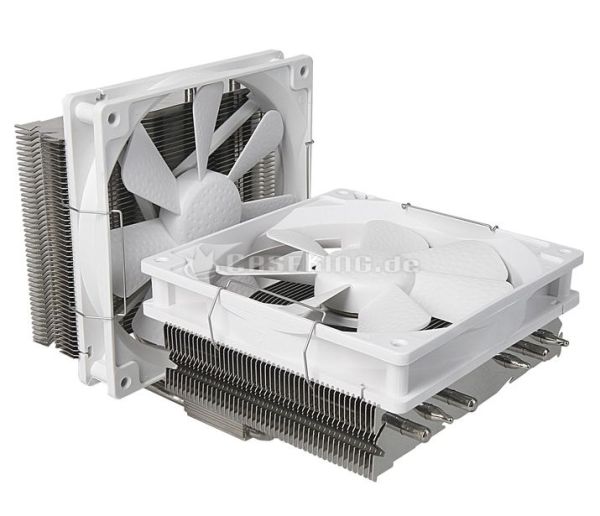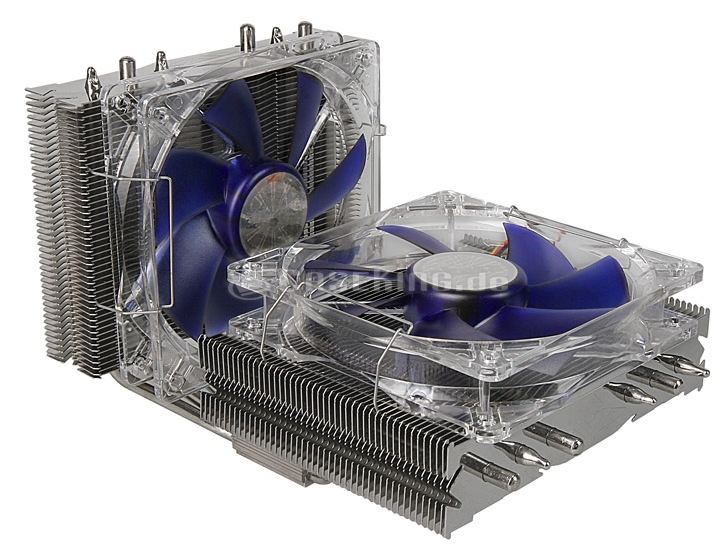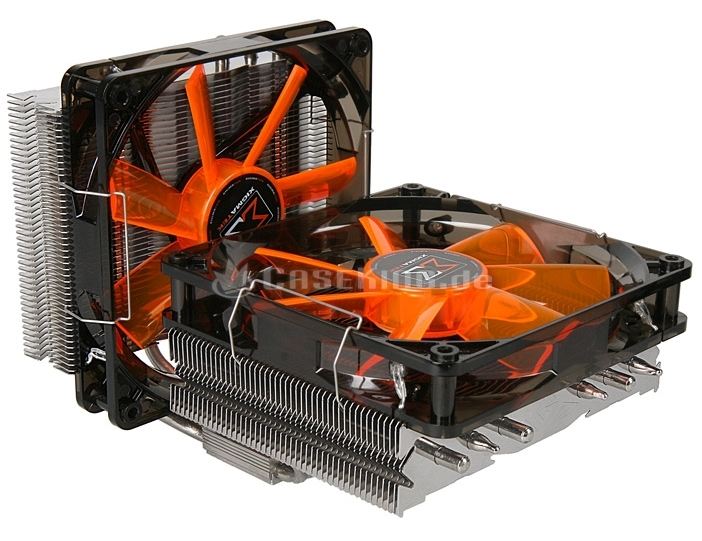Index


Review: Long live the King
Prolimatech Genesis is a new cooler in the high-end segment of the CPU cooling market. Its design, as you can see, is pretty unusual but we’ve heard it packs a mean punch and we set out to see whether that is indeed the case.
Genesis' concept was talked about for around two years, but Prolimatech kept its promise an finalized the mass production step. As you can see, the cooler is anything but ordinary.
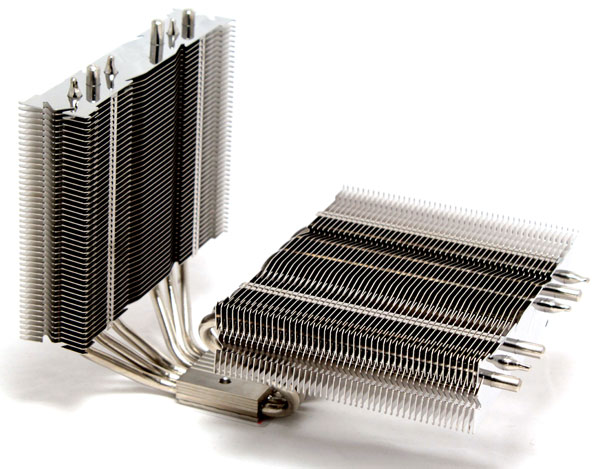
Judging by size alone, Genesis should definitely do a good job, but its size might turn out to be a hindrance for those with smaller cases. Furthermore, Genesis’ size is in accordance with its price, meaning that it does not come cheap. You can find it priced at €60 at caseking.de, here.
Although Genesis’ packaging is large as a PSU one, we though the simplicity and color scheme were quite refreshing. Let’s hope Genesis “refreshes” our components as well.

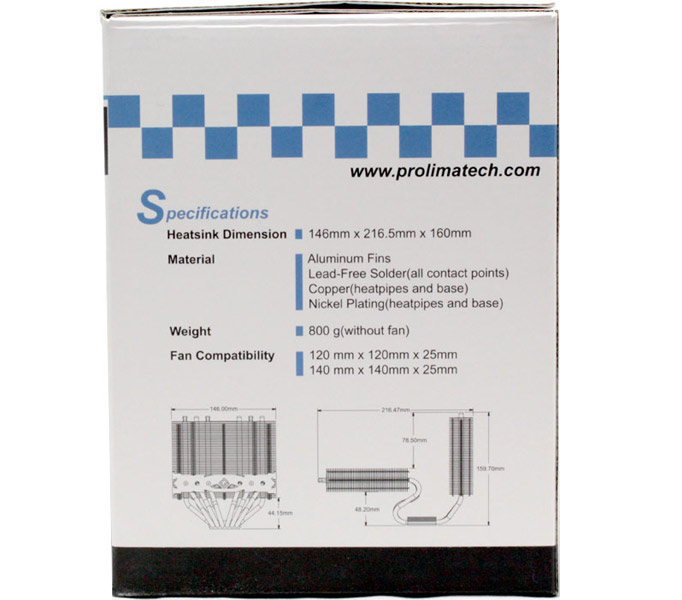

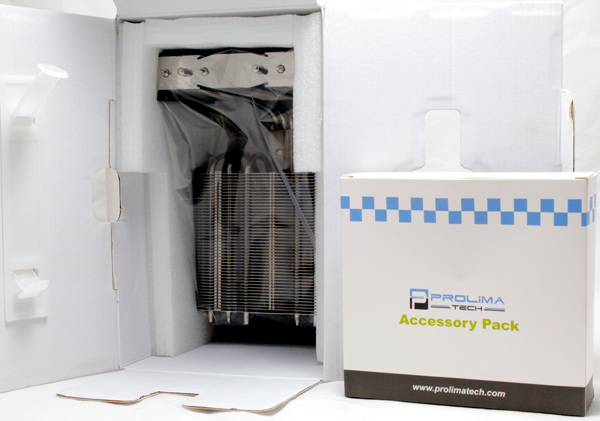
As you can see from the picture, the box holds components for mounting the cooler on AMD’s and all popular Intel’s sockets. Specs say that Genesis measures 146mm x 216.5mm x 160mm.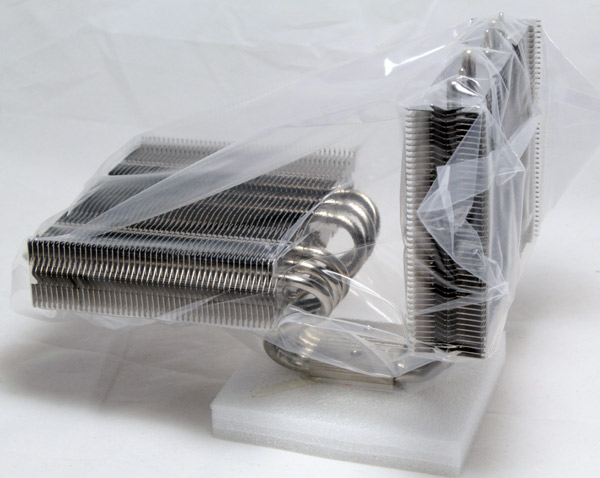
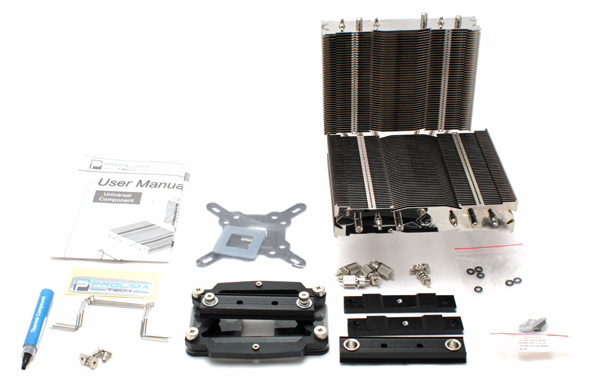
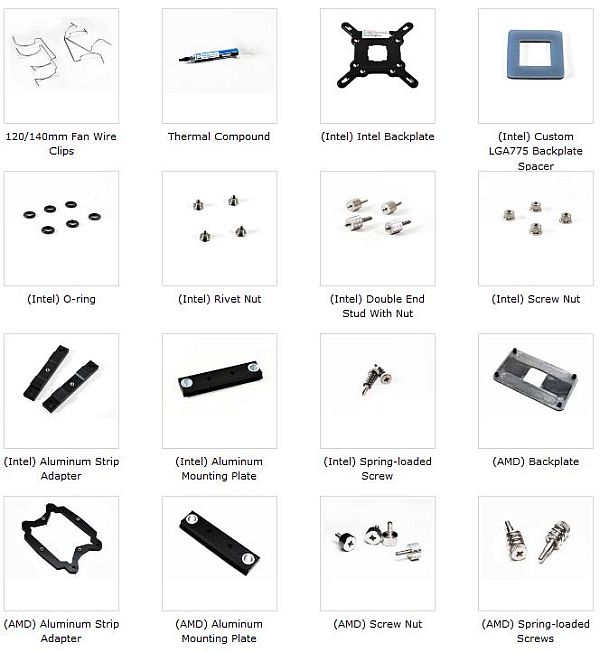
Genesis cooler encompasses tower and blow-down cooling all in one neat package. The heatsink, as you can see, is split in two parts - one part is perpendicular to the CPU whereas the other is parallel to the motherboard. Genesis should be efficient even when paired up with low-RPM fans and its unusual design allows for using up to three large 14cm fans.
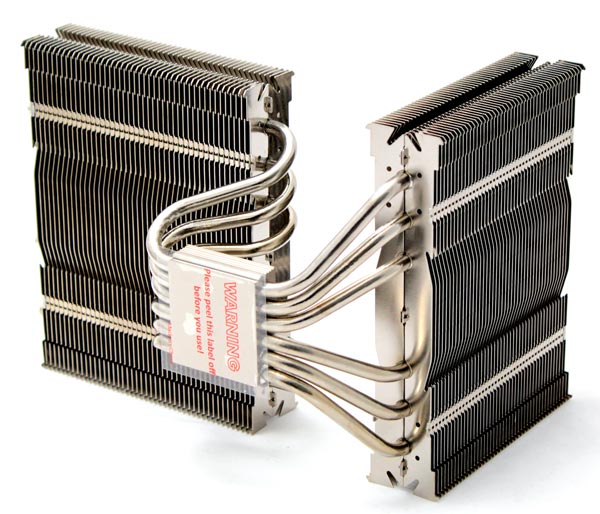
Just to put things in perspective, the picture below shows how Genesis looks when mounted on a motherboard. The box says that Genesis is an „all-in-one Super-Sized CPU cooler“ and we agree wholeheartedly.
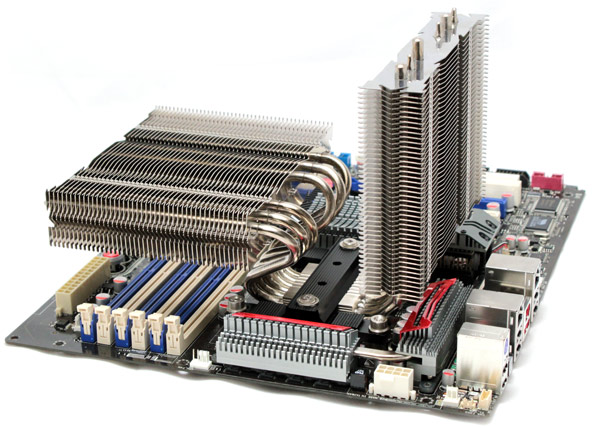 .
.
The heatsink measures (L)146mm X (W)216.5mm X (H)160mm and weighs in at 800g. Genesis has pretty standard weight for a high-end CPU cooler but it could very well be the widest CPU cooler on the market. Genesis supports Intel sockets 775, 1156 and1366 but you can mount it on AMD’s AM2/AM2+/AM3 sockets as well thanks to the included AMD mounting mechanism.
The cooler does not come with fans, but it does feature two 14cm/12cm fan brackets so setting up the fans will be a breeze

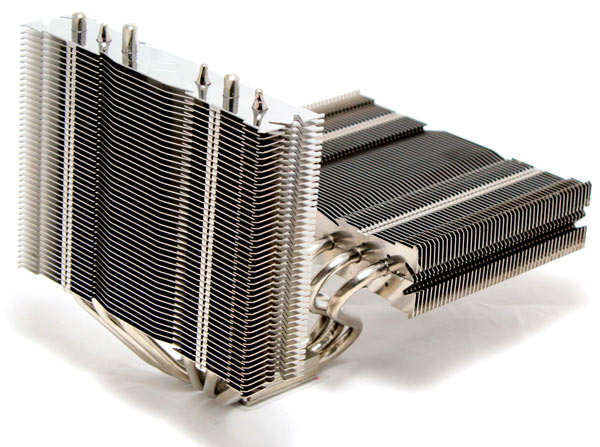
Genesis has six heatpipes. Cooler base is nickel-plated and comes with mirror finish, much like Prolimatech’s earlier coolers.
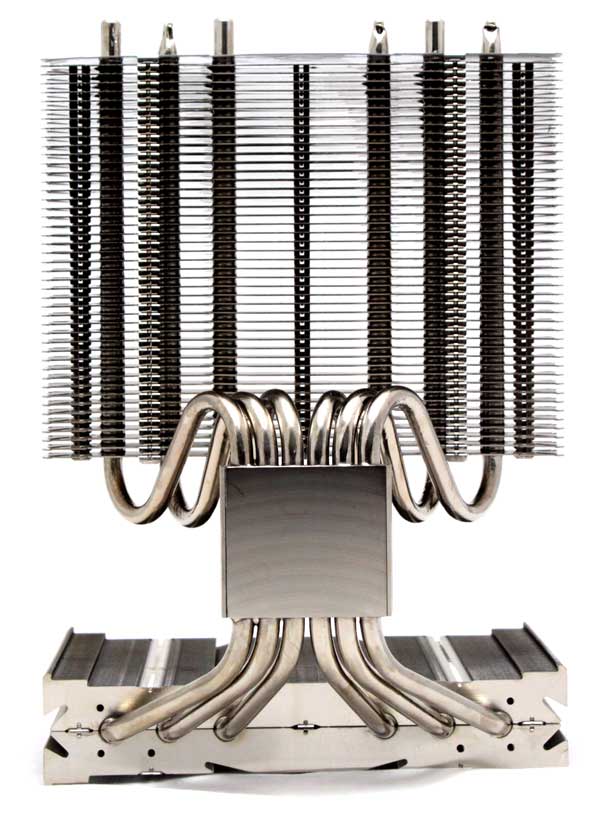
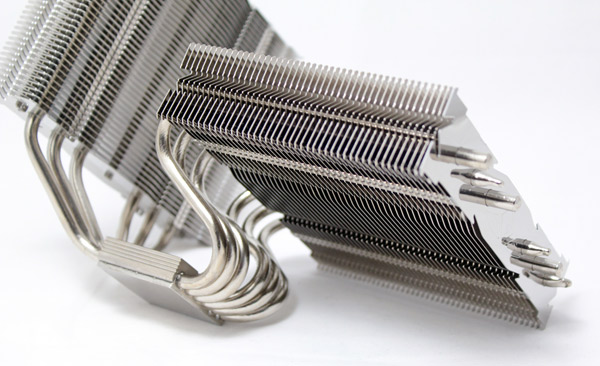
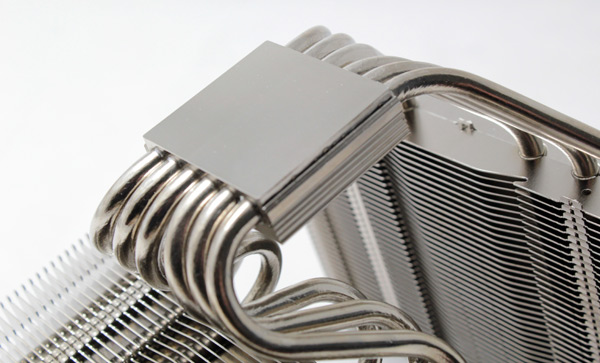
The two Genesis heatsinks are perpendicular to one another, which means that Genesis utilizes every possible bit of airflow.
Mounting the Genesis cooler is not complicated and can easily be performed by following the included written instructions, provided the cooler is compatible with your motherboard of course. For this reason we’ll skip the mounting procedure and show the Genesis mounted on Asus Rampage II Extreme motherboard.
Genesis packaging says that it will cool your CPU, RAM, MOSFET and Northbridge chipset, where our testing has proven it is indeed the case. The picture clearly shows how Genesis cools the memory.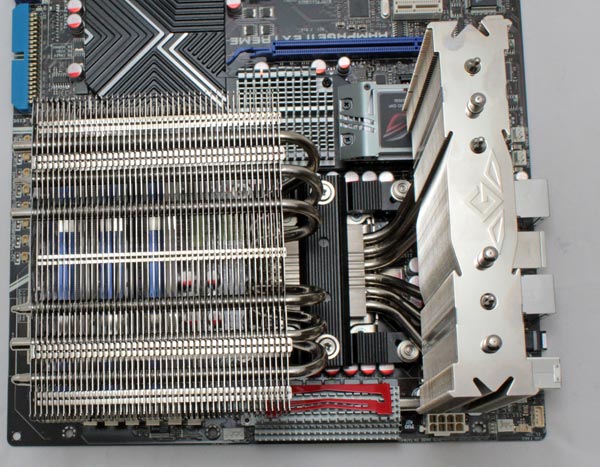
Prolimatech has been making CPU coolers with split heatsinks, such as Megahalem or Armageddon coolers. However, Genesis’ heatsink is not only split but the parts are completely detached from one another. We’ve already said that heatsink measures (L)146mm X (W)216.5mm X (H)160mm. Note that it is designed in order to fit on most motherboards.
However, not all motherboards will like this cooler. For instance, we had difficulties mounting the Genesis on EVGA’s FTW 3 motherboard due to the board using a tall VRM heatsink. We practically couldn’t mount the cooler until we removed the motherboard’s heatsink and replaced it with smaller heatsink modules. VRM temperatures didn’t exceed 67°C, which is in normal limits.
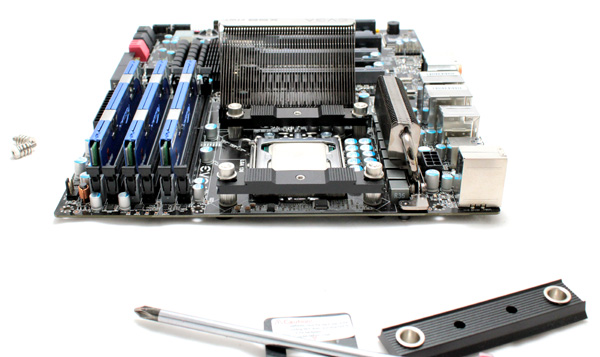
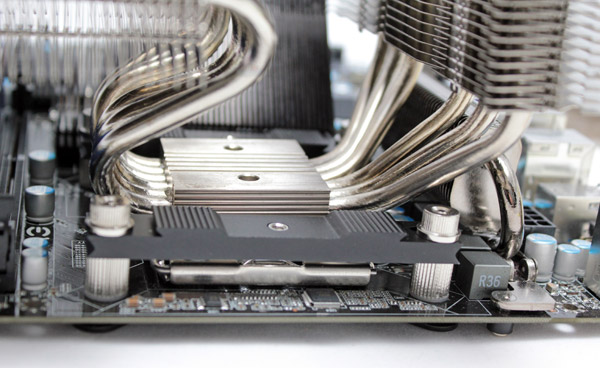
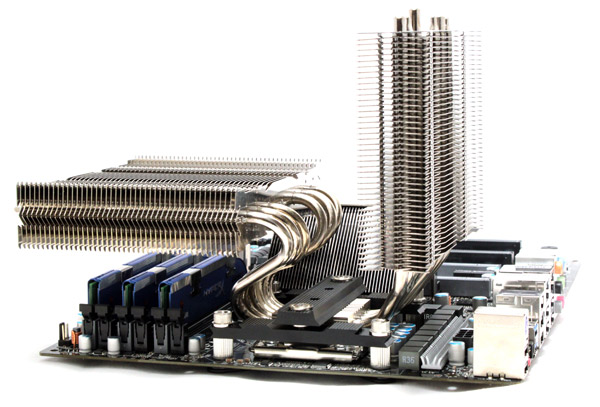
Prolimatech pretty neatly bent several heatpipes and routed them over memory slots. Heatsink has a slim design, with plenty of space below for tall memory modules with heatsinks, such as Corsair Dominator series.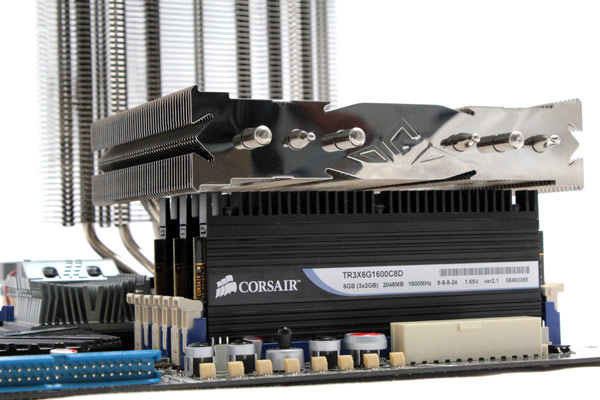
The cooler’s slim design definitely helps with any potential conflicts with memory modules, but bear in mind that you will have to remove the Genesis before replacing the memory. However, Genesis can be removed by unscrewing two screws so that should not take up too much of your time.
We managed to mount Kingston's memory modules without taking the cooler off.

In most cases, though dependent on motherboard design, Genesis will take two 14cm fans in a push-pull configuration (it’s also possible to mount two 12cm fans).
Testing
We performed our testing in Corsair Obsidian 800D case with three reference fans running at 900RPM (room temperature about 22°C). Our weapons of choice were EVGA’s X58 FTW3 motherboard and Core i7 930 CPU. The temperatures were measured at reference 2.9GHz as well as after our overclock (we pushed the CPU to 3.6GHz).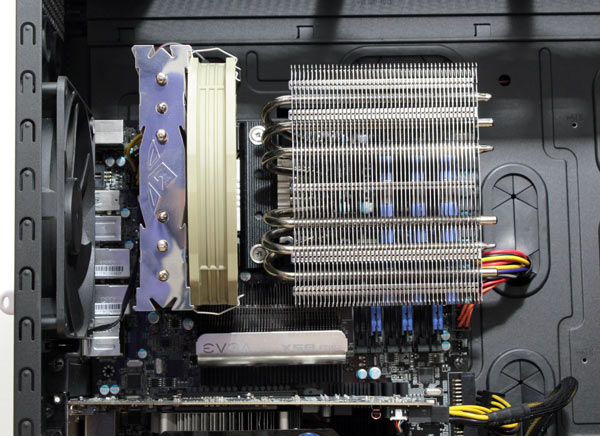
The heatsink measures (L)146mm X (W)216.5mm X (H)160mm, so you might experience difficulties when mounting it on certain motherboards that might have tall and/or wide chipset cooling solutions.
For the first test with Genesis we used one 14cm fan. We’re talking about Thermalright’s TR-TY 140 fan (900~1300RPM) which ended up being enough for excellent Genesis performance. The case’s rear panel houses a 14cm fan that pushes the air out, so we’ve got ourselves a neat push-pull setup here.
We’ve already mentioned that the 14cm, 900 RPM fan on the case’s rear panel does great to improve cooling and ultimately, adding another fan on the coolers tower heatsing made little difference, so we strapped Genesis with one more fan but we mounted it on the heatsink above the memory modules and you can see it on the picture below.
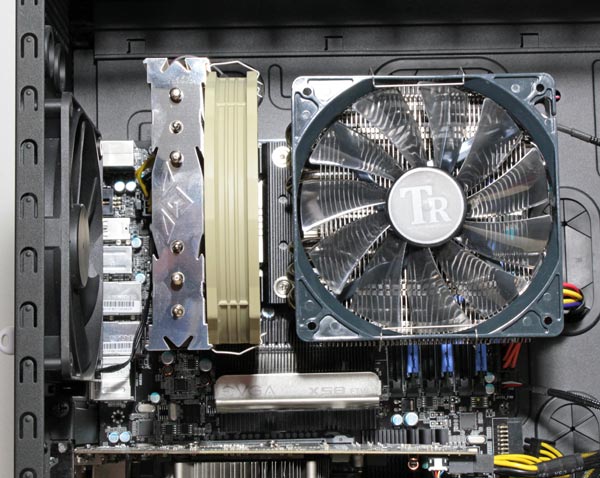
We used Prime95 to put a 100% load on all Core i7 930’s cores, so bear in mind that we’re talking about a scenario that will most probably never happen. We measured temperatures on all four cores using AIDA64 (the successor to Everest), and put average values in the tables. We used Gelid’s GC Extreme paste.

After overclocking the CPU to 3.6MHz, Genesis took the top spot.
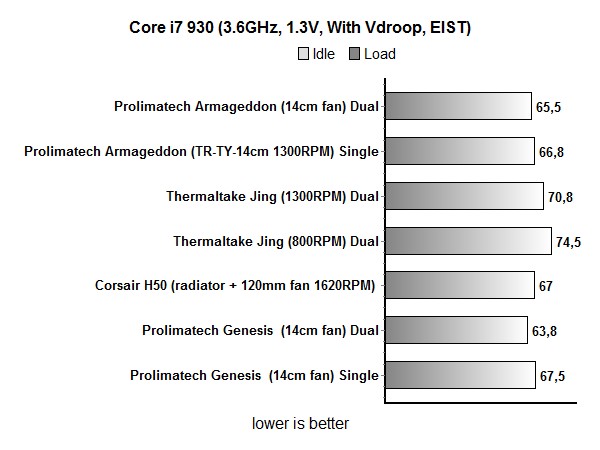
Genesis is Prolimatech’s new high-end CPU cooler with excellent performance that definitely walks in the footsteps of Prolimatech’s Megahalems, Armageddons and Super Megas. This time however, Prolimatech chose to step away from the standard tower design and designed the Genesis in a way for it to mount a strong challenge for the king of high-end cooling. Apart from excellent CPU cooling, Genesis will take care of components around the CPU socket in a much better way than classic tower CPU coolers.
Standard Genesis packaging does not include fans, but Caseking.de who kindly provided our test sample said that they will offer several versions with included fans. You can find the link and some pictures below.
Before our photo gallery, we must say that we were blown away by Genesis’ performance. This means that two fans will most likely provide some serious cooling performance, the kind that will be really difficult to beat by the competition. Provided your motherboard is compatible with it and you don’t mind shelling out extra few bucks, you seriously cannot go wrong with Prolimatech Genesis.
Genesis hit the shelves today and you can find it here price at 60 euro without the fans. It definitely does not come cheap, but we're confident that the cooling performance will make it worth your while. We would recommend the Genesis to enthusiasts as it packs a mean cooling punch and in that respect thoroughly deserves to be dubbed a "Fudzilla Recommended" piece of equipment. However, if you think that your ideal cooling should not cost as much, you might want to check out Prolimatech's Armageddon which goes for 44 euro, here.
